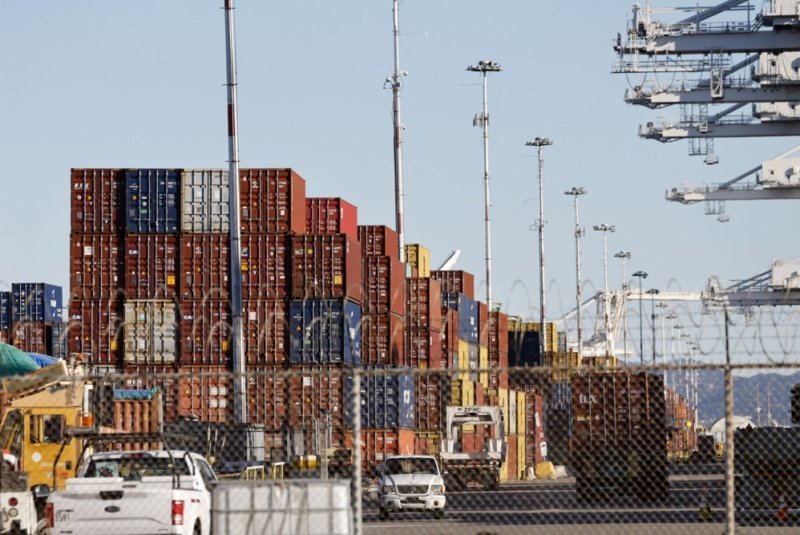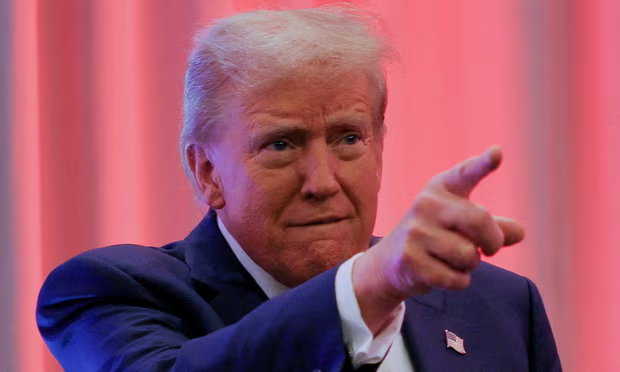US-BRICS Tensions: Trump's Tariff Threats
On Saturday, Donald Trump announced his intention to impose a 100% tariff on BRICS nations if they proceed with plans to replace the U.S. dollar in global trade. This measure targets a coalition of leading developing economies, including Russia, India, China, and Iran, marking the latest in a series of tariff threats from the president-elect. This could seriously disrupt the US-BRICS trade relation.
Trump took to social media to express his concerns, stating, “The idea that BRICS countries are trying to move away from the Dollar while we stand by and watch is OVER. We require a commitment from these countries that they will neither create a new BRICS currency nor back any other currency to replace the mighty U.S.”
The announcement has added fuel to the growing tension between the U.S. and the BRICS bloc, highlighting the geopolitical and economic stakes of the ongoing global currency debate.
Understanding BRICS: The Founding Members and Their Vision
BRICS, an acronym for Brazil, Russia, India, China, and South Africa, was formed as an intergovernmental organization focused on advancing international investment strategies and fostering economic cooperation. Its primary goals include promoting peace, security, development, and collaboration among its member states.
Since its inception, BRICS has sought to challenge the dominance of Western-led financial systems. One of the bloc’s long-term visions is to reduce dependence on the U.S. dollar, establish alternative financial institutions, and harmonize economic and diplomatic policies to strengthen global partnerships.
A significant step in this direction occurred in 2012 when BRICS collectively contributed $75 billion to the International Monetary Fund (IMF) to enhance its lending capacity. This move demonstrated the bloc’s commitment to playing a larger role in global economic stability.
Over time, BRICS has expanded its influence, attracting interest from nearly three dozen countries, including Turkey, Azerbaijan, and Malaysia, who have applied for membership. This growth reflects BRICS’ rising prominence and its mission to reshape the global financial system.
The Dollar's Dominance and BRICS’ Challenge
The U.S. dollar has long been the cornerstone of the global financial system, dominating international trade and financial reserves. According to the International Monetary Fund (IMF), approximately 58% of the world’s foreign exchange reserves are held in dollars. Additionally, around 88% of international transactions and 61% of global debt are conducted in the U.S. currency. The dollar also plays a pivotal role in SWIFT payment systems and sets the benchmark for crude oil pricing.
This dominance gives the U.S. significant leverage in global trade, but it has also fueled dissatisfaction among countries seeking a more multipolar financial system. BRICS nations, in particular, have voiced concerns about over-reliance on the dollar and have proposed alternatives, including the creation of a new BRICS currency and increased use of non-dollar currencies in trade—a process known as “de-dollarization.”
The Impact of Trump's Tariff Threats on US-BRICS Trade

Trump’s tariff threats represent a bold challenge to BRICS’ ambitions. Tariffs function as taxes on imported goods, with the cost typically passed along to consumers. By imposing a 100% tariff on BRICS nations, Trump aims to deter these countries from pursuing alternatives to the dollar.
India and China, two of the largest BRICS economies, stand to face significant repercussions. Both nations maintain robust trade relationships with the U.S., exporting a diverse array of products, including textiles, pharmaceuticals, engineering goods, and IT services. A 100% tariff would make these goods significantly more expensive in the U.S. market, reducing their competitiveness and potentially harming their export-driven economies.
For BRICS as a whole, such tariffs could lead to higher costs for exporters and disrupt trade flows. The bloc may be forced to reassess its de-dollarization strategies in light of these economic pressures.
Economists and analysts have raised concerns about the broader impact of these tariffs. Some view Trump’s move as a de facto declaration of economic war on BRICS nations, potentially escalating into a full-blown trade conflict.
Global Repercussions of a US-BRICS Trade War
The implications of a US-BRICS trade conflict extend far beyond the immediate parties involved. A global economic slowdown could be an inevitable consequence of escalating tensions. Christine Lagarde, President of the European Central Bank, has warned that trade wars harm global GDP and create negative ripple effects for all parties.
The World Trade Organization (WTO), traditionally a mediator for trade disputes, is currently paralyzed, leaving little room for resolution through diplomacy. This further exacerbates concerns about the potential fallout of unilateral tariff measures.
In addition to economic consequences, the political ramifications could be significant. A trade war could deepen the divide between the U.S. and emerging economies, accelerating efforts by BRICS nations to create alternative financial and trade mechanisms. Such a shift could erode the dollar’s dominance over time, fundamentally altering the landscape of global trade.
Conclusion
Donald Trump’s threat to impose 100% tariffs on BRICS nations underscores the growing tension between the U.S. and emerging economies challenging the dollar’s dominance. While the move is intended to protect the U.S.’s financial leverage, it risks triggering a chain reaction with far-reaching economic and political consequences.
For BRICS nations, the threat may serve as a wake-up call, prompting them to double down on their efforts to establish an alternative financial system. Meanwhile, the global community faces the challenge of navigating these tensions to prevent a prolonged trade war and its potential impact on global stability.
As the world watches this standoff unfold, it remains to be seen whether diplomatic solutions can prevail or if the global economy is headed toward a more fragmented and contentious future.

